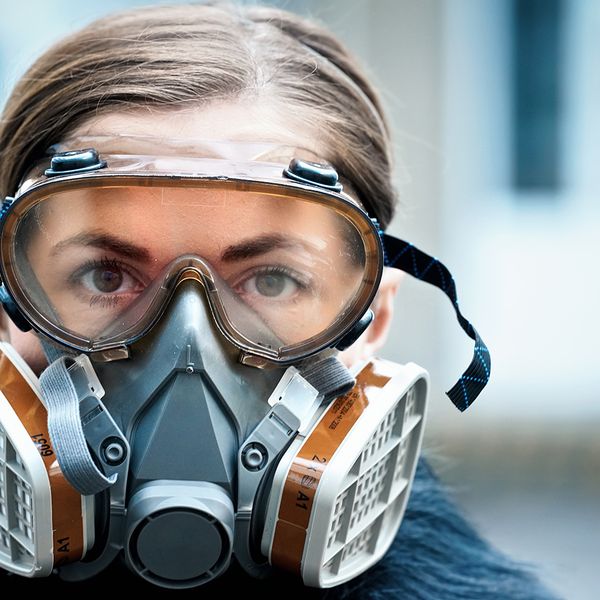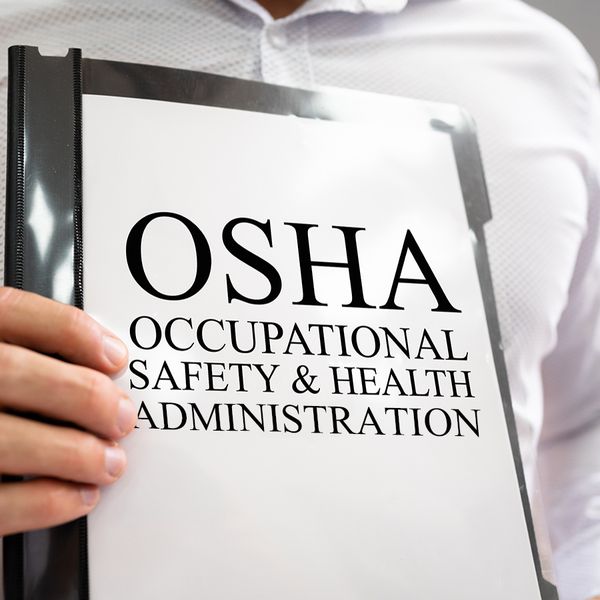3 compliance agencies dubbed hardest nuts to crack, per healthcare poll
It’s no secret that the healthcare industry is swamped by government requirements from a host of federal, state, and local agencies. New survey results put three agencies in a near tie for the “greatest compliance challenge” category for leaders, managers, and others in healthcare.
Two of the agencies may be no surprise — the Centers for Medicare & Medicaid Services (CMS), and the Centers for Disease Control and Prevention (CDC). However, some might be taken aback to learn that the Occupational Safety and Health Administration (OSHA) ranked just as challenging to comply with for the healthcare industry.
The lion’s share of the attention in healthcare has long been on patient care and safety. Therefore, to discover that OSHA — a worker safety and health agency — weighed in as a huge pain point with the other two agencies should raise eyebrows.
Survey data
An August 2024 survey report from the J. J. Keller Center for Market Insights recently tapped 220 professionals from healthcare. This included respondents from clinics/offices; hospitals; ambulatory, nursing, and home care services; outpatient facilities; behavioral health services; medical/dental labs; and other healthcare service types.
As stated, the CMS, CDC, and OSHA each took over 20 percent of the findings in answer to the question, “What government entity’s standards pose the greatest compliance challenge(s) to your organization?” Together, these three stand out from any others for that survey question. In total, they racked up 75 percent of the results!
Other agencies and organizations made up another 10 percent in aggregate, while “none of the above” garnered 14 percent.
Healthcare is dogged by OSHA
OSHA’s mission is “to assure America’s workers have safe and healthful working conditions.” While patient safety is not part of that mission, worker safety and health efforts can spill over into that space. For example, ensuring that workers have proper means of egress and fire protections relates to patient safety. In fact, patient safety efforts may not succeed without safe healthcare workers.
OSHA requires private-sector healthcare employers to provide workers with a safe and healthful work setting free of known serious hazards. The agency has over 1,600 pages of regulations covering general industry, and that includes healthcare. These regulations are complex, but healthcare employers must comply with all applicable requirements.
Healthcare organizations have well over 100 applicable OSHA regulations. The top-cited OSHA regulations for hospitals in fiscal year 2023 include:
- 29 CFR 1910.134, Respiratory Protection;
- 29 CFR 1910.1030, Bloodborne Pathogens; and
- 29 CFR 1910.147, Lockout/tagout.
OSHA’s Healthcare topic page also showcases regulations for personal protective equipment, formaldehyde, ethylene oxide, ionizing radiation, chemical hazard communication, and laboratories.
Yet, the agency’s reach can go beyond regulations. Hazards related to ergonomics, workplace violence, and infectious diseases may be cited. The citations point to section 5(a)(1) of the Occupational Safety and Health Act, which calls for worker protections from serious, recognized hazards. Also, OSHA officers follow the agency’s “Inspection Guidance for Inpatient Healthcare Settings,” which targets lifting-related musculoskeletal disorders, workplace violence, tuberculosis, and other hazards.
OSHA and state-plan state inspections are unannounced — they can happen at any time! In addition, an OSHA penalty can reach over $161,000 per violation.
Industry hit by worker injuries/illnesses
Statistics show that healthcare settings are hazardous places to work! The injury/illness incidence rates for hospitals and nursing and residential care facilities are higher than in the construction industry!
Note that the Bureau of Labor Statistics reveals that the leading injury/illness events with days away from work in hospitals in 2021 and 2022 were:
- Exposure to harmful substances/environments (like COVID-19),
- Overexertion/bodily reaction (like patient handling), and
- Slips/trips/falls.
Because of the severity of some injuries/illnesses and the potential for a worker to suffer one, it’s critical to meet OSHA regulations and beyond. Worker injuries/illnesses come at a high cost that most healthcare facilities likely cannot afford.
The good news is OSHA compliance can lead to a marked decline in worker injuries/illnesses. Even accreditation organizations like The Joint Commission expect to see compliance with applicable OSHA regulations. That’s because meeting OSHA worker safety and health regulations has been discovered to have a positive effect on patient safety. A stable workforce with few worker injuries/illnesses creates a setting conducive to patient confidence and satisfaction.
Where to start
OSHA has resources such as a small business handbook, quick start page, and Hospitals eTool. However, given the importance of OSHA compliance and the challenges it poses to healthcare, it may be wise to have a third party do a comprehensive OSHA compliance audit of each healthcare facility. This is particularly true if leadership is new to workplace safety or does not have the in-house expertise. This baseline may help the facility spot the major hazards and flag OSHA requirements for the site.
The agency recommends that employers conduct compliance inspections at least quarterly. This would be more often if conditions change frequently.
Key to remember
OSHA, along with the CMS and CDC, top the list of compliance challenges for healthcare. A third-party audit or inspection may help these facilities get a handle on the requirements.




















































